The war in Ukraine has called photographers to take their shots, too – photography serves as evidence of unforgivable crimes as well as a tool for manifesting harmony; at Okapi Gallery in Tallinn, one can see the exhibition of Ukrainian front-line photography, curated by two Ukrainians – Kateryna Radchenko and Andrii Mur – whose own photos represent the widespread “flag colour empathy” and remind of hope for better days.
A matter of truth
Kateryna Radchenko, the main curator, states that even though information is freely available everywhere, many people still do not understand what is really going on in Ukraine: it is clear today that the Russian invasion is not about destroying infrastructure, but the whole country, and it is dangerous not only for Ukraine, but for the whole Europe.
“The international media will be here for a while, on a contractual basis – for them it is a work to be done. However, the local authors in Ukraine do not do it as a work; it is about their country, their city, their home – the perspectives and narratives are quite different. It is crucial to show these stories from the inside,” Radchenko, who is based in Ukraine, explains.

It is easier to manipulate with the text than with an image – photography is a universal language, and it is a language that can increase the level of understanding.
This language ranges from printed and online versions of daily and weekly newspapers to social media and all kinds of websites, one of which cannot be preferred to the other. “It is important to use every opportunity, because different people follow different channels, as well as to show all the materials, because it brings attention and creates dialogues,” she says, adding that exhibitions, including the open-air versions, are one way to do that.
“Galleries are often places to gather people rather than share information. If the visitors do not want to come to us, we will go to them – for example, we have previously had an event on a bus as part of the Odessa Photo Days festival,” she notes.
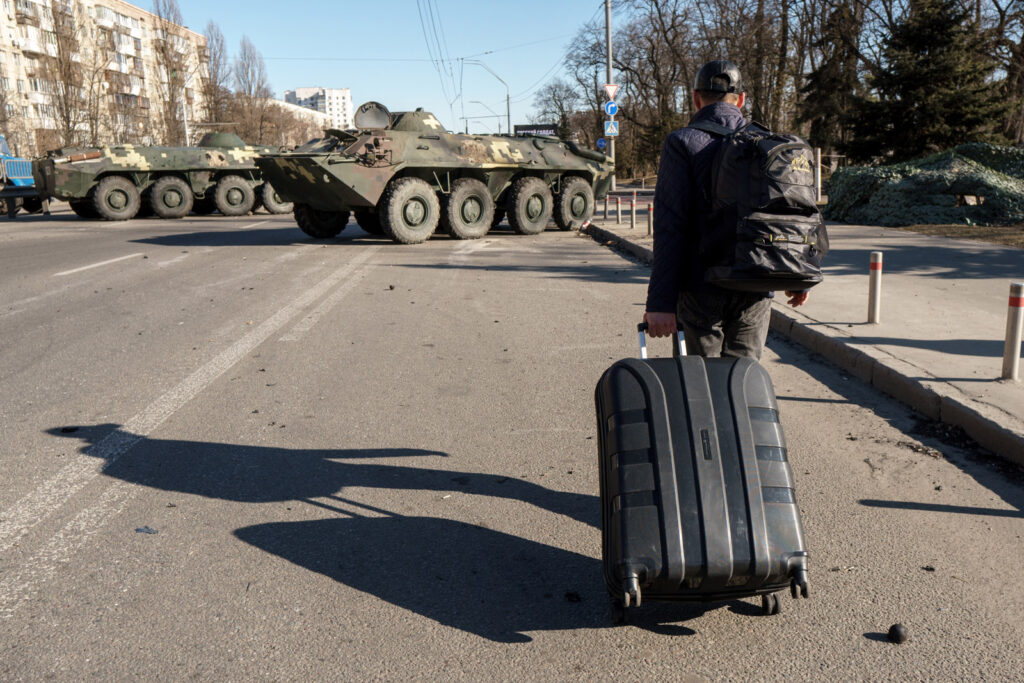
If you ask Kateryna to compare the mission of the Odessa Photo Days before and after 24 February this year – or even before and after 2014 – it appears the festival has been initiated by the need to adequately capture important and complex events.
“When the war started eight years ago, it was clear there was no photography education in Ukraine, so, to fill this gap and develop a photo community, I started organising the festival in 2015. We also deal with collecting, although today we work more like an agency: photographers send the material, we sort it and find ways to publish it.”
Those photographers include both photojournalists with no previous military experience and photographers with no journalistic experience. “It is more difficult for authors with an artistic background, because, in the current situation, they don’t have the time to reflect on their work as usually. However, to sit in Ukraine and do nothing today is impossible, it would be like a slow suicide. People do what they can – they volunteer, they make or share food, they raise money, or they grab a camera and capture it all,” Radchenko explains.
From one side, it is a chance to process and accept the situation; from another, it is a feeling of being necessary – photographers create evidence, not just beautiful shots.

In addition to the exhibition at the Okapi Gallery in Tallinn, the team is working with various institutions to organise exhibitions and events elsewhere: in Hungary, Slovakia, Latvia, the UK. It is also a charity project that uses donations to support Ukrainian artists who have lost their homes or have had to move, as well as voluntary services to create green corridors.
A matter of peace
I also caught up with Andrii Mur, a Tallinn-based co-curator of the exhibition, whose own photos represent the widespread “flag colour empathy” and reminds the hope for better days.
Andrii, tell us about your role and cooperation with Kateryna Radchenko as well as with Temuri Khvingia from the Okapi Gallery in the context of this exhibition?
The role is quite straightforward – I am an active member of the Ukrainian Street Photography community. At the same time, I live in Estonia and take photos a lot here, too. So I know Temuri and Kateryna in person, as well as many authors. I like the saying, “built bridges, not walls.” Therefore, my role here is exactly like a “bridge”.
Our collaboration is very transparent; we had a discussion and decided to show what is going on through the eyes of talented and peaceful photographers who live and photograph in cities that are being attacked. Kateryna is a brilliant curator with vast experience in international projects worldwide. She immediately provided all the unique materials. Together with Kateryna and Temuri, we selected the works. And I sequenced them on the wall, so the exhibition does not merely document the war but has a visually aesthetic meaning as well, even though the war is tragic.
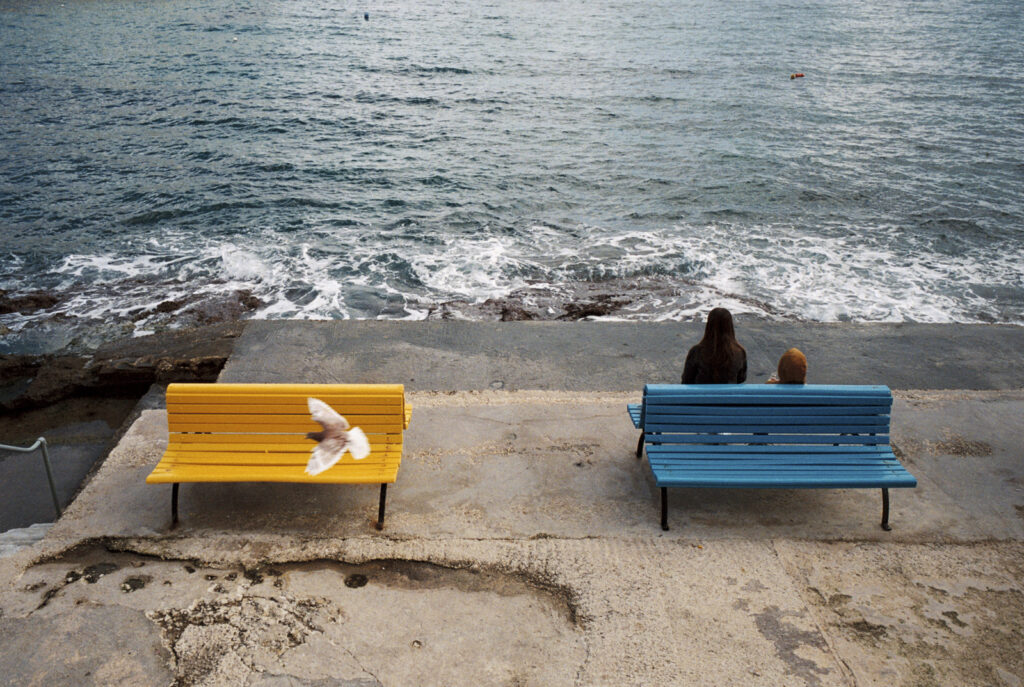
What are the principles of the Ukrainian Street Photography community, who are its members and how to define its mission in the current situation?
The Ukrainian Street Photography community is like a huge family of passionate photographers – it has over 15,000 members. The main rule is that you must be a Ukrainian or live in Ukraine, make candid photographs, and respect each other. It’s worth mentioning Mikhail Palinchak and Volodymyr Petrov, the founders of the community. They are currently documenting the Russian invasion of Ukraine in the warzones and their works are also exhibited at the Okapi Gallery.
I guess the current mission is to genuinely document life in Ukraine during the war: to emphasise human values and show emotions; to expose the truth and increase awareness.
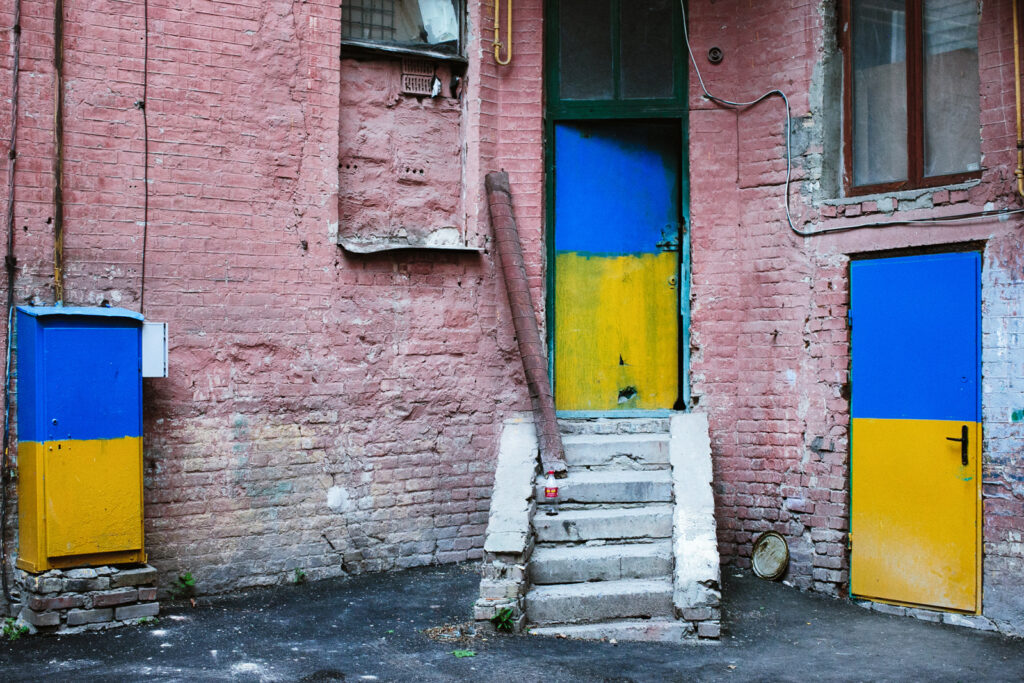
Has the truth about life changed after 24 February in your eyes?
Two days before the war began, I started a diary. There’s a lot of sadness and it’s hard to see innocent people dying. It is tough to observe how families split up, how friends are forced to hide in bomb shelters during air alarms. Of course, it is a big struggle for everyone. It is psychologically complicated to observe the war, being connected with so many relatives and people who are there.
At the same time, I believe a lot of good human values crystallise among Ukrainians and maybe even worldwide. Along the war crimes, the fake news and the Russian propaganda, there is no place left for lies and resentments among people who care about peace. People genuinely care about each other and their land, their homes and even about strangers in need.
We are not trying to convince you at the exhibition – come and see yourself and you will feel it has happened for real. And then many questions might arise, like: what does really matter in life for you?
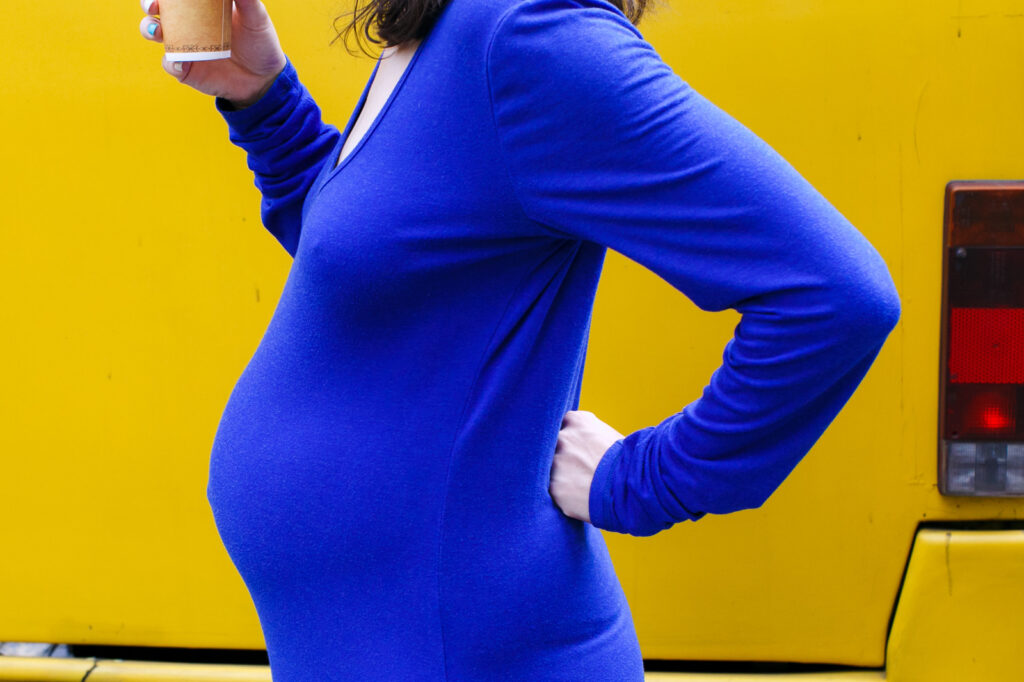
“Be like water and you will know what harmony is” – this is another quote from you. What are the symbols of harmony in your own creativity?
Unity of inner and outer worlds. Drops of water connect into streams, rivers, seas, oceans. So every goodwill gesture does matter; every intent towards peace makes the change. It is inspiring how united the Ukrainians are now, how everyone fulfils their role.
In my humble opinion, the mind is stronger than guns. Whether you are a soldier, photographer, doctor, refugee, musician, engineer, writer or just a human with a heart – your actions, intents, creations, thoughts matter, your attitude matters. It all defines the reality you live in.
So be clear like water, be flexible, avoid hatred and fear. Help yourself, then connect, care about others, support, join the stream, so peace would eventually prevail.
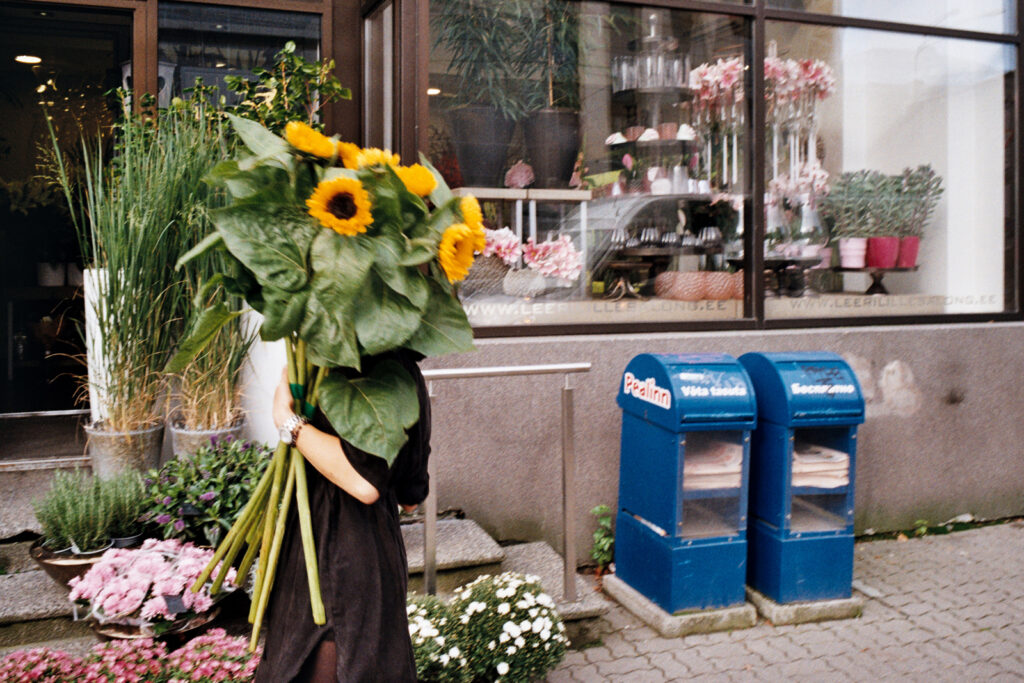
What would be the leading line of the authors represented in the exhibition, besides the war itself?
We are not against war – we are for peace. It is worth protecting and sharing values like truth, peace, love and beauty. We believe it is better to be alive – in love, in freedom and harmony, and even to die for it with dignity – rather than to live in fear, hatred and lies, basically already being dead.
The exhibition will remain open at the Okapi Gallery until 30 April 2022 and can be visited from Monday to Friday 11:00 AM – 6:00 PM, Saturday 11:00 AM – 4:00 PM at 2 Niguliste Street, Tallinn.

